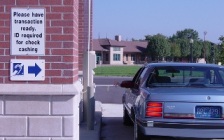Hearing Loops For Libraries
How Can I Make The Public Library More Accessible?
Approximately 15% of American adults (37.5 million) aged 18 and over report some trouble hearing: http://www.nidcd.nih.gov/health/statistics/Pages/quick.aspx
People with hearing loss may not be able to fully experience meetings in the library or the information that is shared at the information desks.
The LSTA grant has been successfully used to fund hearing loops in library meeting rooms and service desks to make them fully compliant with the Americans with Disabilities Act.
The American Disabilities Act (ADA) was enacted to protect the rights of individuals with disabilities by eliminating barriers to their participation in major life activities. The (ADA) of 1990 was revised on September 15, 2020 with an effective date, (nationally) of March 15, 2020. The revised regulation includes the 2010 Standards for Accessible Design, also known as ‘2010 Standard’ or ‘Standards’. The 2010 Standard also include the ADA Amendments Act (ADAAA) effective January 1, 2020 which expanded the non-exhaustive list of major life activities to include activities like “reading, communicating, bending,…” etc as a disability under ADA. The 2010 Standard also expanded the definition of a disability to include the words “speech, vision, and hearing” requiring both physical access and access to effective communication. Places of public accommodations include places such as pharmacies and libraries. (Don Bataille, Architect – 2015)
For more information about the ADA see www.ada.gov and the LSTA grants: http://www.imls.gov/programs/

In Wisconsin: Contact Bradley Shipps Continuing Education and Outreach Librarian at the Outagamie Waupaca Library System for information about the grant application process and handouts for your library.
What Other Places Can Benefit from A Hearing Loop System?
- Seminar/Meeting Rooms
- Lecture Theatres/Auditoria
- Theatres/Concert Halls
- Cinemas
- Banks Drive Up windows
- TV lounges in retirement communities, nursing homes & hospitals
- Tour buses that utilize PA systems for announcements or movies
- City Council Chambers
- City Court Rooms
Hearing Loops use the signal from existing PA systems. If your business or meeting room uses a microphone to communicate with your employees or customers, an induction loop will significantly improve the signal for users of hearing aids.
It should be noted that Induction loop systems can be configured to reduce spillover into surrounding areas outside of the looped area. Confidentiality is not an issue if the induction loop system is properly designed and installed. |

Paragon Bank
Holland, Michigan
|